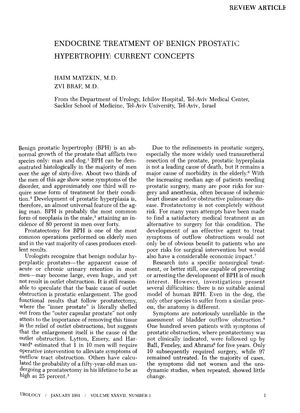Endocrine Treatment of Benign Prostatic Hypertrophy: Current Concepts
January 1991
in “
Urology
”

TLDR New hormonal treatments for enlarged prostate show promise for safer, effective non-surgical options.
The document from 1991 discusses the evolution of endocrine treatment for benign prostatic hypertrophy (BPH), highlighting the shift from focusing solely on reducing androgens to considering the role of estrogens in stromal hyperplasia, a key change in BPH. It notes the potential of combining antiandrogenic and antiestrogenic treatments, as evidenced by research showing that prostates in beagles reduced in size with such combined therapy. The paper mentions the development of "antihormones" that are enzyme inhibitors with fewer side effects than previous hormonal drugs, and the promising in vitro results of the aromatase inhibitor 4-hydroxy-androstenedione on human prostatic 5-alpha reductase. The motivation for researching non-surgical treatments for BPH is driven by the high cost of prostatic surgeries and the aging population's increased health risks associated with surgery. For medical treatment to be considered successful and a potential replacement for surgery, it must improve symptoms, eliminate residual urine, and improve urinary flow. The document suggests that a scientifically sound and clinically safe and effective hormonal treatment for BPH may be feasible in the near future.